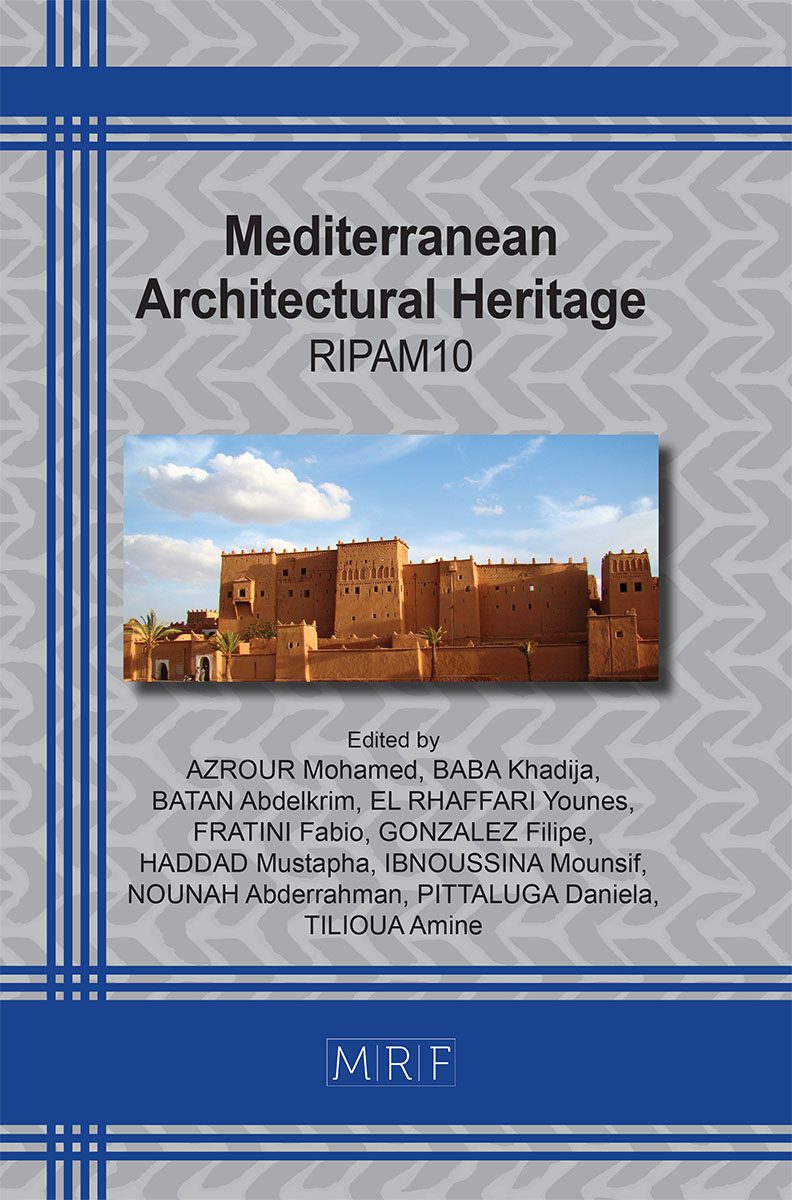Object Detection Method for Automated Classification of Distress in Rabat’s Built Heritage
Oumaima KHLIFATI, Khadija BABA, Sana SIMOU
download PDFAbstract. Rabat, the capital city of Morocco, proudly boasts a rich and complex architecture-al legacy that beautifully blends historical influences ranging from Islamic to con-temporary designs. Conserving this unique heritage holds paramount importance in safeguarding the city’s distinctiveness and cultural significance. Conventional approaches to cataloging and categorization have been time-consuming and susceptible to human errors. Hence, this study aims to overcome these obstacles by creating a sophisticated object detection model to streamline the classification process. In this study, we propose an innovative deep learning-driven approach to detect and classify various degradations of built heritage. The dataset used in this study comprises numerous captured images that display diverse types of degradation, including cracks, collapse, rising damp, spalling, delamination, and lichens. Manual annotation was conducted to label the various damages present in the dataset. These labeled images were then used to train and validate the model. Multiple performance metrics were employed to assess and evaluate the model’s performance, including precision and recall. Based on the results, the developed model has demonstrated excellent performance in both detecting and classifying different types of damage. This model’s effective use aids local authorities in urban planning, heritage preservation, education, and tourism promotion, yielding broad implications.
Keywords
Heritage Sites, Object Detection Model, Damage Classification, Automatic Detection
Published online 3/15/2024, 5 pages
Copyright © 2024 by the author(s)
Published under license by Materials Research Forum LLC., Millersville PA, USA
Citation: Oumaima KHLIFATI, Khadija BABA, Sana SIMOU, Object Detection Method for Automated Classification of Distress in Rabat’s Built Heritage, Materials Research Proceedings, Vol. 40, pp 358-362, 2024
DOI: https://doi.org/10.21741/9781644903117-37
The article was published as article 37 of the book Mediterranean Architectural Heritage
![]() Content from this work may be used under the terms of the Creative Commons Attribution 3.0 license. Any further distribution of this work must maintain attribution to the author(s) and the title of the work, journal citation and DOI.
Content from this work may be used under the terms of the Creative Commons Attribution 3.0 license. Any further distribution of this work must maintain attribution to the author(s) and the title of the work, journal citation and DOI.
References
[1] V Gattulli, L Chiaramonte. Condition Assessment by Visual Inspection for a Bridge Man-agement System. Computer-Aided Civil and Infrastructure Engineering. 2005;20(2):95-107. https://doi.org/10.1111/j.1467-8667.2005.00379.x
[2] LA Santos, I Flores-Colen, MG Gomes. In-situ Techniques for Mechanical Performance and Degradation Analysis of Rendering Walls. Restoration of Buildings and Monuments. 2013;19(4):255-266. https://doi.org/10.1515/rbm-2013-6606
[3] T Reyno, C Marsden, D Wowk. Surface damage evaluation of honeycomb sandwich aircraft panels using 3D scanning technology. NDT & E International. 2018;97:11-19. https://doi.org/10.1016/j.ndteint.2018.03.007
[4] M O’Byrne, F Schoefs, B Ghosh, V Pakrashi. Texture Analysis Based Damage Detection of Ageing Infrastructural Elements. Computer-Aided Civil and Infrastructure Engineering. 2013;28(3):162-177. https://doi.org/10.1111/j.1467-8667.2012.00790.x
[5] I Flores-Colen, J Brito, V Freitas. Expected render performance assessment based on impact resistance in situ determination. Construction and Building Materials. 2009;23(9):2997-3004. https://doi.org/10.1016/j.conbuildmat.2009.05.003
[6] K Makantasis, E Protopapadakis, A Doulamis, N Doulamis, C Loupos. Deep Convolutional Neural Networks for efficient vision based tunnel inspection. In: 2015 IEEE International Con-ference on Intelligent Computer Communication and Processing (ICCP). ; 2015:335-342. https://doi.org/10.1109/ICCP.2015.7312681
[7] YJ Cha, W Choi, G Suh, S Mahmoudkhani, O Büyüköztürk. Autonomous Structural Visual Inspection Using Region-Based Deep Learning for Detecting Multiple Damage Types. Comput-er-Aided Civil and Infrastructure Engineering. 2018;33(9):731-747. https://doi.org/10.1111/mice.12334































